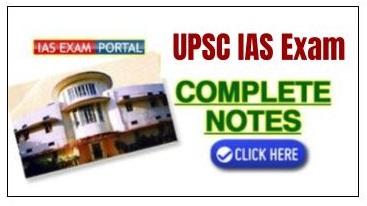Maharashtra PSC: Agricultural Engineering : Revised Syllabus for State
Services (Main) Examination (Optional)
Agricultural Engineering (Code No
: 102) Paper - I
Standard : Degree in Agricultural Engineering
Total Marks : 200
Nature of Paper : Conventional Type
Duration : 3 Hours
Note :
1) Answers to this paper must be written in English only.
2) This paper will test the candidate’s ability to comprehend, to analyse, to
interpret, to criticise and to appraise subject matter related to the
topics/sub-topics mentioned below.
3) For judging candidates’ conceptual understanding, appropriate number of
numerical problems will be asked.
4) It is expected from candidates to study the latest and recent developments
and happenings pertaining to the topics/sub-topics mentioned below.
Section - A ( Marks : 50 )
1) Drying of Farm Crops :
1) Importance and need for drying; Moisture content and
its measurement, Equilibrium moisture content; Heat and mass transfer in drying,
Moisture migration and prevention of moisture accumulation, Psychrometry,
psychrometric chart and its application for drying process.
2) Design of dryers; Types of food grains dryers such as
Batch dryer, Recirculating batch type (RPEC) dryer, Louisiana State University
(LSU) dryer, Baffle dryer, Rotary dryer and Solar (cabinet) dryer.
2) Engineering Properties and Handling of Biological Materials :
1) Physical characteristics such as shape, size, spatial
dimensions, roundness, sphericity, volume, density, specific gravity, surface
area, porosity. Mechanical properties like hardness of grain, compressive
strength, impact and shear resistance. Thermal properties such as specific heat,
thermal conductivity, thermal diffusivity. Electrical properties like electrical
conductance, capacitance and dielectric properties.
2) Aero and hydrodynamic characteristics such as drag
coefficient, terminal velocity. Rheological properties such as force deformation
behavior, ideal elastic behavior, ideal plastic behavior, ideal viscous
behavior, viscoelastic behavior; Material handling devices such as conveyors and
elevators, Design of material handling devices like belt conveyor, screw
conveyor and bucket elevator.
3) Processing of Biological Materials :
Importance and need of processing, Unit operations such as cleaning,
sorting, grading, drying, dehydration, storage, milling, handling, mixing,
packaging and transportation; Screen effectiveness, cleaning efficiency, sieve
analysis, fineness modulus, uniformity index and particle size estimation;
Principles and operations of air screen cleaner, specific gravity separator,
spiral separator, disc separator, indented cylinder separator, magnetic
separator and pneumatic separator.
Section - B ( Marks : 50 )
4) Dairy and Food Engineering :
1) Mass and energy balance; heat transfer and heat exchangers
(Double pipe, Shell and tubes, and coils); Pasteurization (vat, HTST and UHT
pasteurization), Homogenization; Principle and operations of spray, drum, vacuum
and freeze dryer. Evaporation, design of single effect and multiple effect
evaporators; Principle and operations of pan, natural convection, forced
convection, long tube, short tube, rising film, falling film evaporators; Vapour
absorbtion system.
2) Refrigeration, vapour compression refrigeration system;
Heating and cooling load calculation; Precooling, cold storage and its design;
Controlled atmospheric (CA) storages and modified atmospheric (MA) packages for
horticultural crops; Freezing, estimation of freezing time using planks method;
Principles of fruits and vegetables preservations - canning, drying, slicing,
blanching, sterilization, thermal processing; Need and importance of food
packaging, functions, general requirements, types of packaging materials, forms
of packaging.
5) Agricultural Structures :
1) Farm stead and Farm house design, Farm fencing – woven
wire, close mesh type, barbed wire, plain wire, welded wire, electric; Cost
estimation of barbed wire fencing; Dairy barn – stanchion and loose housing
barn, milking parlour, pen barn, community barn; Poultry hous



